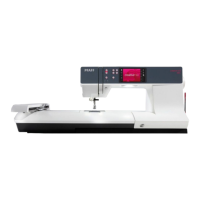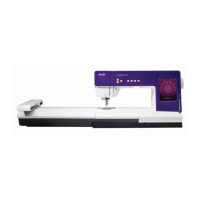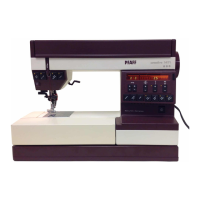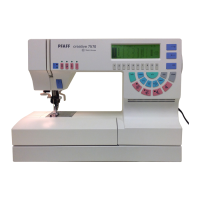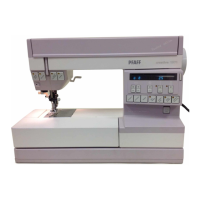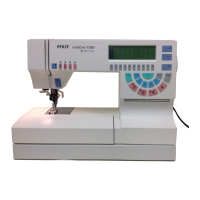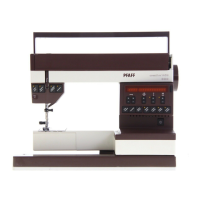2:11
Utility stitches and practical sewing
Sewing on buttons
With zigzag stitch G (stitch width 4
mm) you can sew on two and four hole
buttons.
• Remove the sewing foot and lower the
feed dog.
• Turn the handwheel towards you and
move the button so that the needle enters
the left hole in the button.
• Now lower the presser foot lifter; this
holds the button in place.
• Sew on the button. Take care to ensure
that the needle also enters the right-hand
hole in the button.
Securing
• Select straight stitch by turning the
width dial (26) to 0.
• Change the needle position with the
needle position dial (27) so that the needle
enters one of the two holes.
• Sew a few securing stitches.
stitch
G
G
G
4
4
4
–
–
–
2-3
2-3
2-3
–
–
–
Hemming with the twin needle
Use the twin needle to make beatiful
topstitch seams.
Using the twin needle you can add a
professional touch to hems on stretch
fabrics such as T-shirts, knitted articles or
cycling shorts both quickly and easily.
Twin needles are available in different
widths. The traditional width for
topstitching is 4 mm. To prevent the
needle from striking the needle plate, you
must make sure that you select the center
needle position .
• First fold and iron the width of fabric
desired for the hem.
• Then topstitch the hem from the right
side.
• Finally, cut the protruding hem edge
back to the seam.
Use only a stretch needle when sewing
stretch fabric!
Tip: On difÀ cult fabrics such as ribbed knit-
wear it is advisable to baste the hem before
topstitching it.
On page 1:11 you will À nd a description
of how to thread the twin needle.
stitch
G
G
G
0
0
0
3
3
3
3-5
3-5
3-5
0/1
0/1
0/1
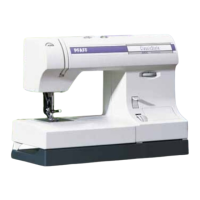
